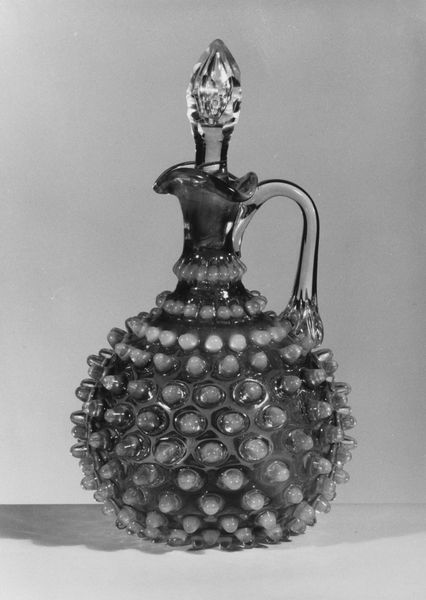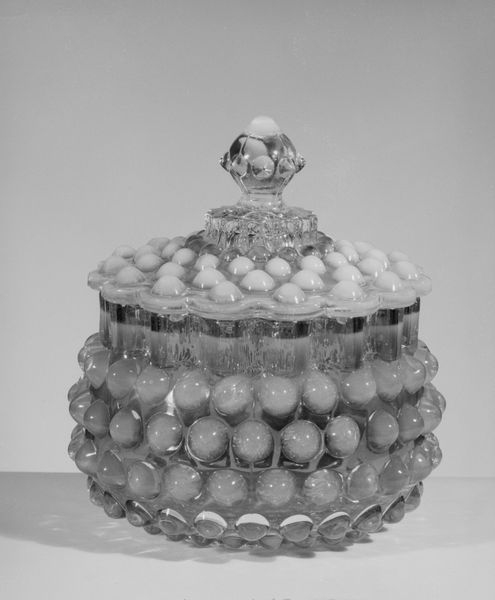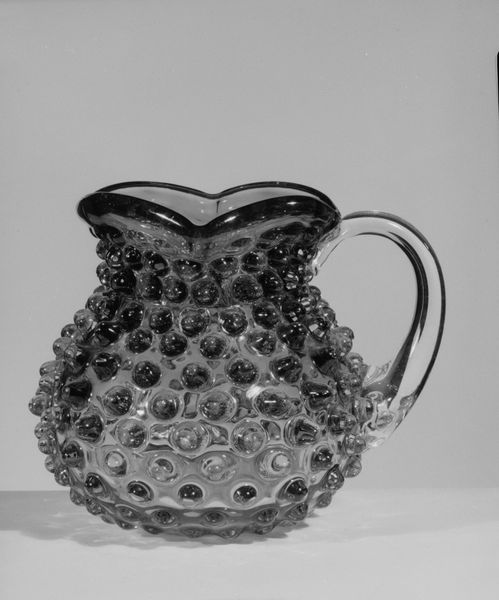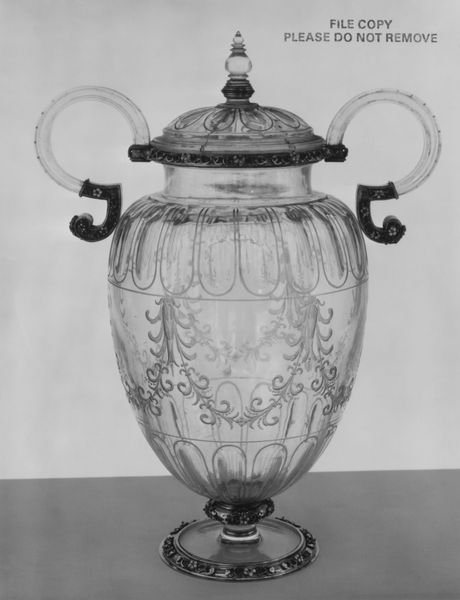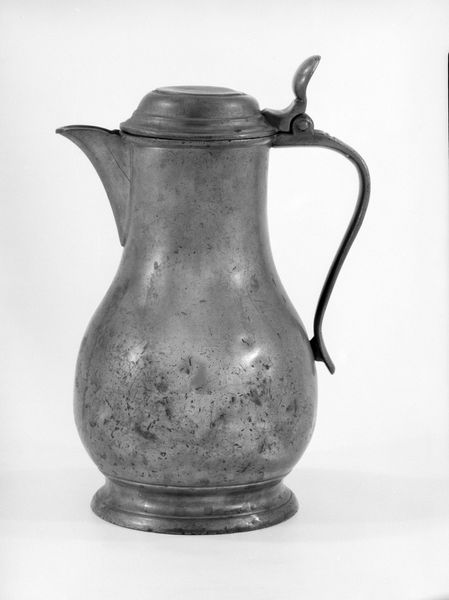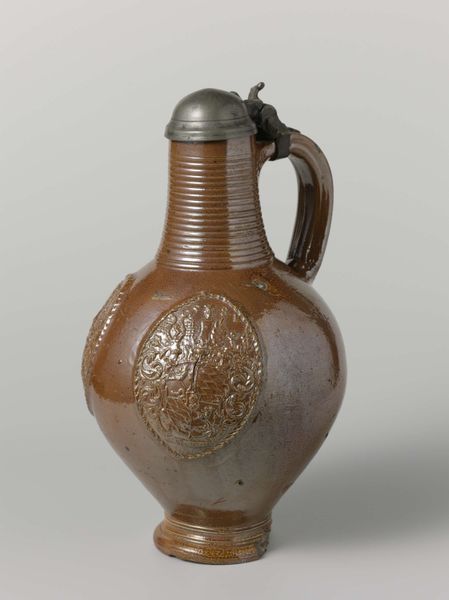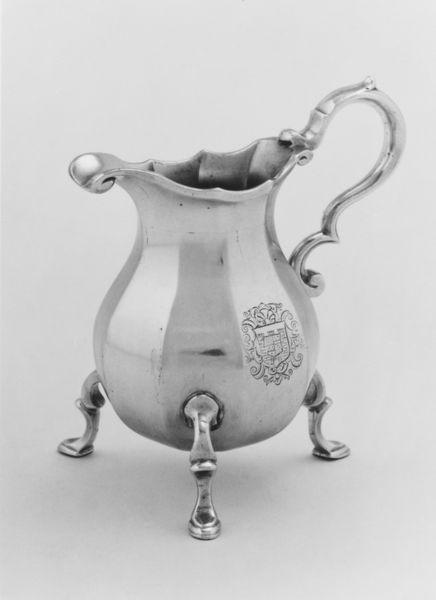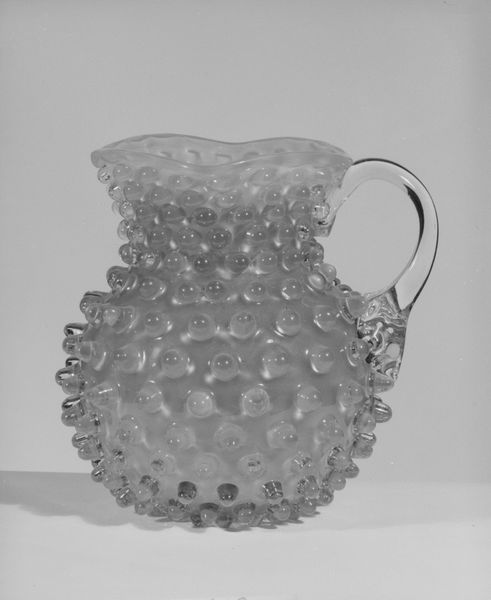
glass, sculpture
#
glass
#
sculpture
#
united-states
Dimensions: H. 7 1/8 in. (18.1 cm)
Copyright: Public Domain
Editor: We're looking at a "Hobnail Cruet," a glass sculpture made by Hobbs, Brockunier and Company between 1887 and 1896, and it is currently housed in the Metropolitan Museum of Art. I find the texture quite fascinating – almost like a delicate sea creature. What stands out to you in terms of its formal qualities? Curator: The piece certainly offers a wealth of visual information. Primarily, it is crucial to examine the contrasting textures. Note the smooth, translucent handle and neck juxtaposed with the body of uniform hobnails. Observe how this contrast directs our gaze. Editor: So, the smoothness sort of "frames" the hobnail texture? Curator: Precisely. Furthermore, consider the interplay of light and shadow created by the hobnails. The regularity of the pattern generates a dynamic surface. We could use semiotics here, almost like a coded language of bumps. Editor: So, are you saying each hobnail acts as a 'signifier?' What could that 'signified' concept be? Curator: The signifier would certainly include the visual information and physical qualities - glass, shape, surface qualities, reflectivity. These can perhaps suggest preciousness or abundance or some other related concept based on period, place, artist, and materials. Beyond visual impact, how does the piece engage your senses of touch and weight based on its overall form? Editor: Well, visually it seems like it would have weight. And given the period in American history I suppose that could communicate stability and even luxury? Curator: An excellent insight. Reflecting on the work, one appreciates the ways seemingly simple choices –texture, form, color-- combine to form the total effect. Editor: Yes, I have an enriched understanding from our analysis.
Comments
No comments
Be the first to comment and join the conversation on the ultimate creative platform.

